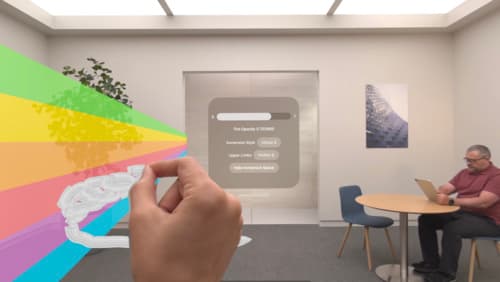ARKit
Asked on 2024-07-30
6 searches
ARKit was a significant focus at WWDC 2024, with several sessions highlighting its new features and capabilities. Here are some key points:
-
Scene Understanding Improvements:
- Room Tracking: ARKit can now identify the boundaries of a room and compute precisely aligned geometries of the detected walls and floor. It can also recognize transitions between rooms, allowing apps to tailor experiences based on the current room. Create enhanced spatial computing experiences with ARKit
- Plane Detection: Updates to plane detection help customize experiences based on the room you're in. Create enhanced spatial computing experiences with ARKit
-
Object Tracking:
- New object tracking capabilities allow for interactive visualizations of real-world items. This can be particularly useful for precise placement of virtual content on real-world objects. Create enhanced spatial computing experiences with ARKit
-
World Tracking:
- ARKit's world tracking has become more robust under various lighting conditions. If the system detects limited tracking due to low light, it will switch to orientation-based tracking to prevent complete tracking loss. Create enhanced spatial computing experiences with ARKit
-
Hand Tracking:
- Improvements in hand tracking can enhance user interactions, such as in games or creative applications. Create enhanced spatial computing experiences with ARKit
-
Integration with RealityKit:
- RealityKit, which provides high-performance 3D simulation and rendering capabilities, integrates seamlessly with ARKit to support spatial computing experiences. This includes building spatial drawing apps and other interactive 3D applications. Build a spatial drawing app with RealityKit
For a comprehensive overview of these features, you can refer to the session Create enhanced spatial computing experiences with ARKit.

Explore object tracking for visionOS
Find out how you can use object tracking to turn real-world objects into virtual anchors in your visionOS app. Learn how you can build spatial experiences with object tracking from start to finish. Find out how to create a reference object using machine learning in Create ML and attach content relative to your target object in Reality Composer Pro, RealityKit or ARKit APIs.

Platforms State of the Union
Discover the newest advancements on Apple platforms.

Render Metal with passthrough in visionOS
Get ready to extend your Metal experiences for visionOS. Learn best practices for integrating your rendered content with people’s physical environments with passthrough. Find out how to position rendered content to match the physical world, reduce latency with trackable anchor prediction, and more.
